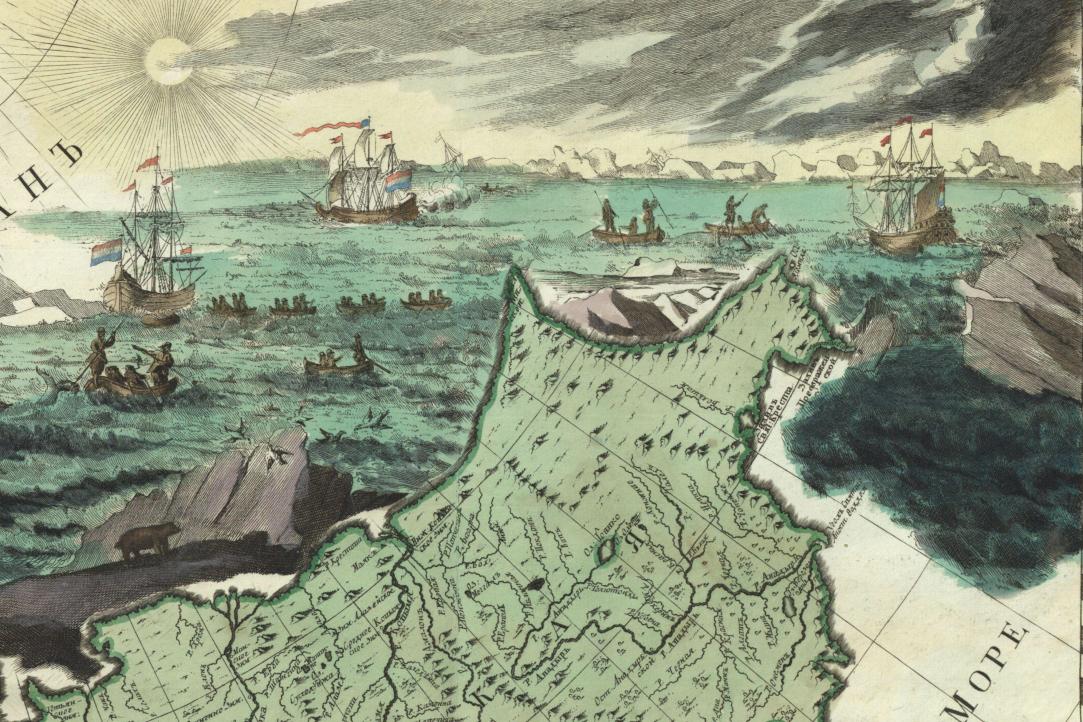International Conference "The Russian Shore: Sea Coasts and River Regions in Russian History, 1700-1991"
Information letter about the International Conference "The Russian Shore: Sea Coasts and River Regions in Russian History, 1700-1991", which is scheduled for October 19-20 (2020). Organizer: HSE, International Laboratory 'Russia’s Regions in Historical Perspective'.

Russian history is studied overwhelmingly from a land-centered point of view. In political and military terms, we almost always emphasize Russia’s experience as a territorial power. The prototypical Russian of times past is the Russian peasant – who, one wonders, could be more land-related than that? Some of the most powerful cultural motifs that we use to make sense of the country are also intimately territorial. For example, the evocative notion of prostor, that supposedly uniquely Russian feeling of living in and being shaped by boundless spaces.
The way we study Russian regions has a similarly landed orientation. We define regional spaces in terms of their territory, where they sit relative to the center or the edges of the state, the ethnic and confessional makeup of their populations, the nature of their economies. In doing this, we invariably take stock of the physical features of regions, such as the fact that some of them have extensive maritime borders or sit along important river networks. Yet we rarely think of these water-oriented regions as a group, and we rarely place the water itself at the center of our analysis.
The goal of this conference is to focus on Russia’s coastal and river regions with the goal of identifying how seas, rivers, and other bodies of water have shaped Russia’s regional physiognomy and development.
On the face of it, the influence seems fundamental: Proximity to seas and inland waters has left a profound mark on the social makeup, economies, identities, and perceived political/strategic importance of different Russian regions, to the point, in many cases, of emerging an essential organizing principle of regional life. The very toponymy of regions seems to bear this out since so many of them reflect the importance of the waters they connect to in their names -- the Trans-Baikal [Zabaikal’e], the Region Along the Volga [Povolzh’e], and the Region on the Black Sea [Prichernomor’e] are just a few examples of this. But even as historians appreciate this reality in a general sense, our conference aims to offer a deeper, more detailed focus on the water-region relationship as a feature of regional history.
To this end, questions that interest us include (but are not limited to) the following:
- What factors define a region as coastal, river, or lake-centered? How have the broader developments of Russian political and economic history affected the history of these regions? What changes have these regions experienced over time? Are there periods of the Russian past that one could characterize as more sea or river-focused than others? What role does technological change play in the development of these regions?
- How has the Russian state measured the importance of water-facing regions? What resources has the state directed towards the development of these areas?
- What comparisons can we make between Russia’s diverse seacoasts (the Artic, the Baltic, the Black Sea, the Caspian, and the Pacific) in terms of their regional development? What are the sub-regions that make up each of these maritime zones and what are the relationships between them? Similarly, what comparisons can we make between the critical river regions of Russia over time (the Volga, the Don, the Dniepr, the Irtysh and other Siberian rivers, the rivers of Central Asia and the Caucasus, the Amur)? How do water-facing or water-centered regions compare to regions that are less obviously defined by water?
- How does Russia’s history as a country of sea and river-based regions compare to the experiences of other parts of the world? Historians often emphasize a distinction between land and sea empires, with Russia placed squarely in the former category. Is this a meaningful distinction for approaching Russian regional history?
- How do seas and inland waterways influence the formation of regional folkways and identities? Is there such a thing as a Russian coastal or river “type”? Who are the individuals and social groups that have most factored in the development of these regions? Among social groups to consider: sailors, boatmen and fishermen (and women), dam-builders, port designers, cartographers, marine artists, members of regional maritime societies, etc.
In the near future, the conference program will be published on the Laboratory's page.
If you have any questions, please, contact the manager of the Laboratory Natalia Beresneva (nberesneva@hse.ru)
